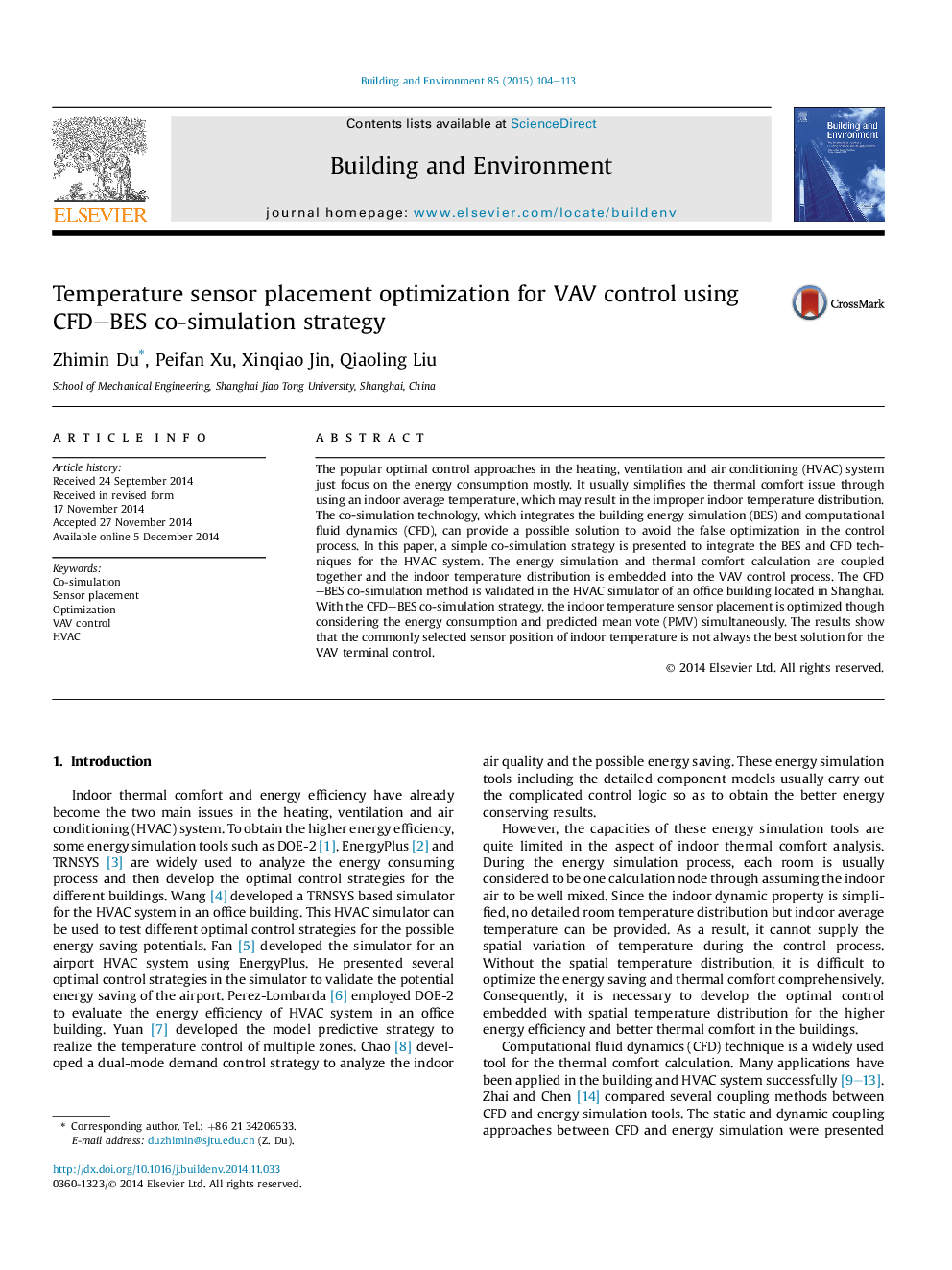| کد مقاله | کد نشریه | سال انتشار | مقاله انگلیسی | نسخه تمام متن |
|---|---|---|---|---|
| 247947 | 502537 | 2015 | 10 صفحه PDF | دانلود رایگان |

• A simple CFD–BES co-simulation strategy is presented for HVAC system.
• Indoor temperature distribution is used to improve the VAV terminal control.
• Temperature sensor placement is optimized to obtain less energy consumption and better thermal comfort.
The popular optimal control approaches in the heating, ventilation and air conditioning (HVAC) system just focus on the energy consumption mostly. It usually simplifies the thermal comfort issue through using an indoor average temperature, which may result in the improper indoor temperature distribution. The co-simulation technology, which integrates the building energy simulation (BES) and computational fluid dynamics (CFD), can provide a possible solution to avoid the false optimization in the control process. In this paper, a simple co-simulation strategy is presented to integrate the BES and CFD techniques for the HVAC system. The energy simulation and thermal comfort calculation are coupled together and the indoor temperature distribution is embedded into the VAV control process. The CFD–BES co-simulation method is validated in the HVAC simulator of an office building located in Shanghai. With the CFD–BES co-simulation strategy, the indoor temperature sensor placement is optimized though considering the energy consumption and predicted mean vote (PMV) simultaneously. The results show that the commonly selected sensor position of indoor temperature is not always the best solution for the VAV terminal control.
Journal: Building and Environment - Volume 85, February 2015, Pages 104–113